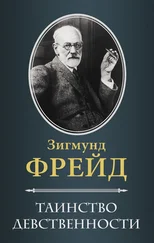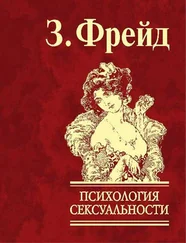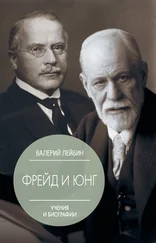Зигмунд Фрейд - Totem and Taboo
Здесь есть возможность читать онлайн «Зигмунд Фрейд - Totem and Taboo» весь текст электронной книги совершенно бесплатно (целиком полную версию без сокращений). В некоторых случаях можно слушать аудио, скачать через торрент в формате fb2 и присутствует краткое содержание. Год выпуска: 2014, Издательство: epubBooks Classics, Жанр: Психология, на английском языке. Описание произведения, (предисловие) а так же отзывы посетителей доступны на портале библиотеки ЛибКат.
- Название:Totem and Taboo
- Автор:
- Издательство:epubBooks Classics
- Жанр:
- Год:2014
- ISBN:нет данных
- Рейтинг книги:3 / 5. Голосов: 1
-
Избранное:Добавить в избранное
- Отзывы:
-
Ваша оценка:
- 60
- 1
- 2
- 3
- 4
- 5
Totem and Taboo: краткое содержание, описание и аннотация
Предлагаем к чтению аннотацию, описание, краткое содержание или предисловие (зависит от того, что написал сам автор книги «Totem and Taboo»). Если вы не нашли необходимую информацию о книге — напишите в комментариях, мы постараемся отыскать её.
Totem and Taboo — читать онлайн бесплатно полную книгу (весь текст) целиком
Ниже представлен текст книги, разбитый по страницам. Система сохранения места последней прочитанной страницы, позволяет с удобством читать онлайн бесплатно книгу «Totem and Taboo», без необходимости каждый раз заново искать на чём Вы остановились. Поставьте закладку, и сможете в любой момент перейти на страницу, на которой закончили чтение.
Интервал:
Закладка:
In this evolution I am at a loss to indicate the place of the great maternal deities who perhaps everywhere preceded the paternal deities. But it seems certain that the change in the relation to the father was not restricted to religion but logically extended to the other side of human life influenced by the removal of the father, namely, the social organization. With the institution of paternal deities the fatherless society gradually changed into a patriarchal one. The family was a reconstruction of the former primal horde and also restored a great part of their former rights to the fathers. Now there were patriarchs again but the social achievements of the brother clan had not been given up and the actual difference between the new family patriarchs and the unrestricted primal father was great enough to ensure the continuation of the religious need, the preservation of the unsatisfied longing for the father.
The father therefore really appears twice in the scene of sacrifice before the tribal god, once as the god and again as the totem–sacrificial–animal. But in attempting to understand this situation we must beware of interpretations which superficially seek to translate it as an allegory, and which forget the historical stages in the process. The twofold presence of the father corresponds to the two successive meanings of the scene. The ambivalent attitude towards the father as well as the victory of the son’s tender emotional feelings over his hostile ones, have here found plastic expression. The scene of vanquishing the father, his greatest degradation, furnishes here the material to represent his highest triumph. The meaning which sacrifice has quite generally acquired is found in the fact that in the very same action which continues the memory of this misdeed it offers satisfaction to the father for the ignominy put upon him.
In the further development the animal loses its sacredness and the sacrifice its relation to the celebration of the totem; the rite becomes a simple offering to the deity, a self–deprivation in favour of the god. God himself is now so exalted above man that he can be communicated with only through a priest as intermediary. At the same time the social order produces godlike kings who transfer the patriarchal system to the state. It must be said that the revenge of the deposed and reinstated father has been very cruel; it culminated in the dominance of authority. The subjugated sons have used the new relation to disburden themselves still more of their sense of guilt. Sacrifice, as it is now constituted, is entirely beyond their responsibility. God himself has demanded and ordained it. Myths in which the god himself kills the animal that is sacred to him, which he himself really is, belong to this phase. This is the greatest possible denial of the great misdeed with which society and the sense of guilt began. There is an unmistakable second meaning in this sacrificial demonstration. It expresses satisfaction at the fact that the earlier father substitute has been abandoned in favour of the higher conception of god. The superficial allegorical translation of the scene here roughly corresponds with its psychoanalytic interpretation by saying that god is represented as overcoming the animal part of his nature [218] It is known that the overcoming of one generation of gods by another in mythology represents the historical process of the substitution of one religious system by another, either as the result of conquest by a strange race or by means of a psychological development. In the latter case the myth approaches the “functional phenomena” in H. Silberer’s sense. That the god who kills the animal is a symbol of the libido, as asserted by C. G. Jung ( l.c. ), presupposes a different conception of the libido from that hitherto held, and at any rate seems to me questionable.
.
But it would be erroneous to believe that in this period of renewed patriarchal authority the hostile impulses which belong to the father complex had entirely subsided. On the contrary, the first phases in the domination of the two new substitutive formations for the father, those of gods and kings, plainly show the most energetic expression of that ambivalence which is characteristic of religion.
In his great work, The Golden Bough , Frazer has expressed the conjecture that the first kings of the Latin tribes were strangers who played the part of a deity and were solemnly sacrificed in this rôle on specified holidays. The yearly sacrifice (self–sacrifice is a variant) of a god seems to have been an important feature of Semitic religions. The ceremony of human sacrifice in various parts of the inhabited world makes it certain that these human beings ended their lives as representatives of the deity. This sacrificial custom can still be traced in later times in the substitution of an inanimate imitation (doll) for the living person. The theanthropic god sacrifice into which unfortunately I cannot enter with the same thoroughness with which the animal sacrifice has been treated throws the clearest light upon the meaning of the older forms of sacrifice. It acknowledges with unsurpassable candour that the object of the sacrificial action has always been the same, being identical with what is now revered as a god, namely with the father. The question as to the relation of animal to human sacrifice can now be easily solved. The original animal sacrifice was already a substitute for a human sacrifice, for the solemn killing of the father, and when the father substitute regained its human form, the animal substitute could also be retransformed into a human sacrifice.
Thus the memory of that first great act of sacrifice had proved to be indestructible despite all attempts to forget it, and just at the moment when men strove to get as far away as possible from its motives, the undistorted repetition of it had to appear in the form of the god sacrifice. I need not fully indicate here the developments of religious thought which made this return possible in the form of rationalizations. Robertson Smith who is, of course, far removed from the idea of tracing sacrifice back to this great event of man’s primal history, says that the ceremony of the festivals in which the old Semites celebrated the death of a deity were interpreted as “a commemoration of a mythical tragedy” and that the attendant lament was not characterized by spontaneous sympathy, but displayed a compulsive character, something that was imposed by the fear of a divine wrath [219] Religion of the Semites , pp. 412–413. “The mourning is not a spontaneous expression of sympathy with the divine tragedy, but obligatory and enforced by fear of supernatural anger. And a chief object of the mourners is to disclaim responsibility for the god’s death —a point which has already come before us in connexion with theanthropic sacrifices, such as the ‘ox–murder at Athens.’”
. We are in a position to acknowledge that this interpretation was correct, the feelings of the celebrants being well explained by the basic situation.
We may now accept it as a fact that in the further development of religions these two inciting factors, the son’s sense of guilt and his defiance, were never again extinguished. Every attempted solution of the religious problem and every kind of reconciliation of the two opposing psychic forces gradually falls to the ground, probably under the combined influence of cultural changes, historical events, and inner psychic transformations.
The endeavour of the son to put himself in place of the father god, appeared with greater and greater distinctness. With the introduction of agriculture the importance of the son in the patriarchal family increased. He was emboldened to give new expression to his incestuous libido which found symbolic satisfaction in labouring over mother earth. There came into existence figures of gods like Attis, Adonis, Tammuz, and others, spirits of vegetation as well as youthful divinities who enjoyed the favours of maternal deities and committed incest with the mother in defiance of the father. But the sense of guilt which was not allayed through these creations, was expressed in myths which visited these youthful lovers of the maternal goddesses with short life and punishment through castration or through the wrath of the father god appearing in animal form. Adonis was killed by the boar, the sacred animal of Aphrodite; Attis, the lover of Kybele, died of castration [220] The fear of castration plays an extraordinarily big rôle in disturbing the relations to the father in the case of our youthful neurotics. In Ferenczi’s excellent study we have seen how the boy recognized his totem in the animal which snaps at his little penis. When children learn about ritual circumcision they identify it with castration. To my knowledge the parallel in the psychology of races to this attitude of our children has not yet been drawn. The circumcision which was so frequent in primordial times among primitive races belongs to the period of initiation in which its meaning is to be found; it has only secondarily been relegated to an earlier time of life. It is very interesting that among primitive men circumcision is combined with or replaced by the cutting off of the hair and the drawing of teeth, and that our children, who cannot know anything about this, really treat these two operations as equivalents to castration when they display their fear of them.
. The lamentation for these gods and the joy at their resurrection have gone over into the ritual of another son which divinity was destined to survive long.
Интервал:
Закладка:
Похожие книги на «Totem and Taboo»
Представляем Вашему вниманию похожие книги на «Totem and Taboo» списком для выбора. Мы отобрали схожую по названию и смыслу литературу в надежде предоставить читателям больше вариантов отыскать новые, интересные, ещё непрочитанные произведения.
Обсуждение, отзывы о книге «Totem and Taboo» и просто собственные мнения читателей. Оставьте ваши комментарии, напишите, что Вы думаете о произведении, его смысле или главных героях. Укажите что конкретно понравилось, а что нет, и почему Вы так считаете.






